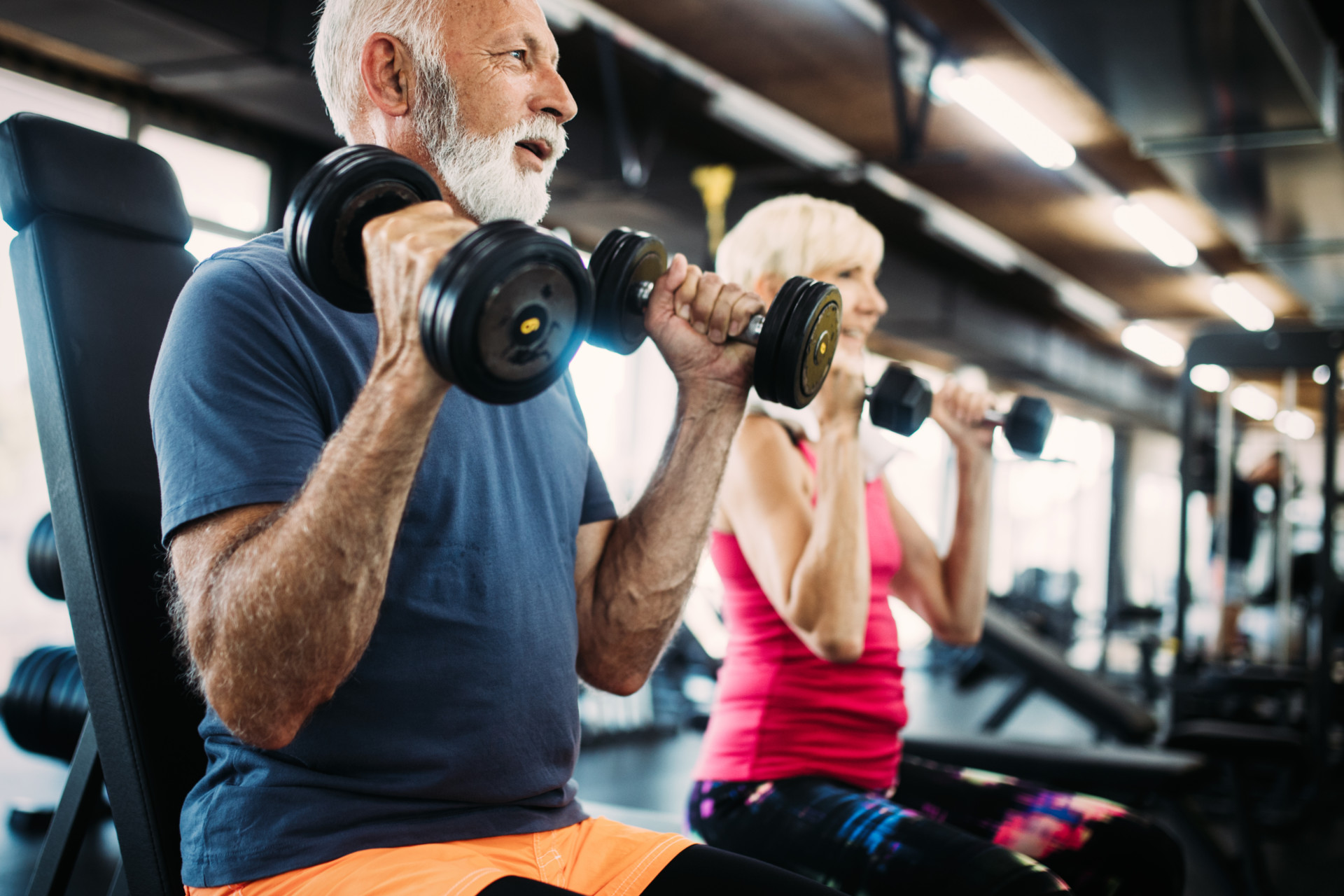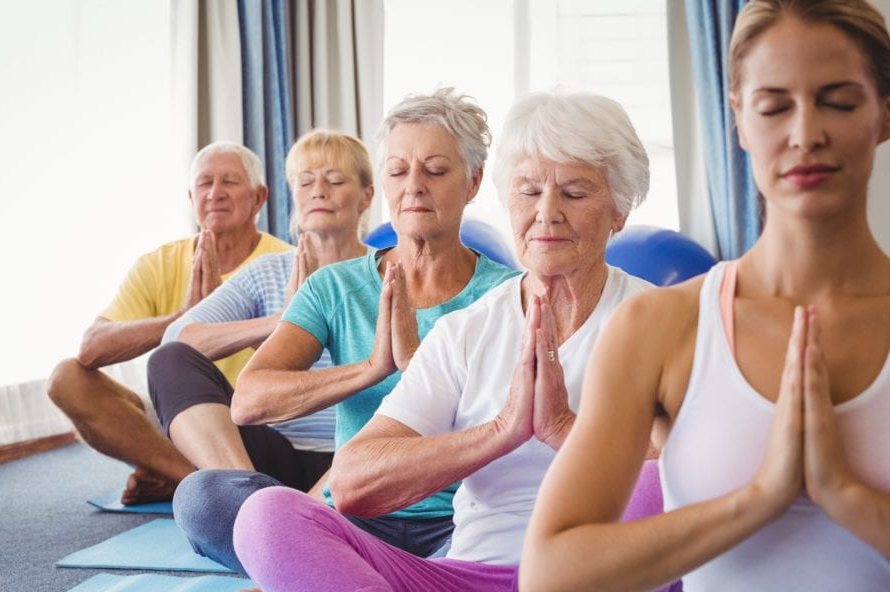Welcome to Healthy Habits Hub!
Healthy Habits Hub is dedicated to creating healthy habits as we age.

Healthy Habits Blog


Top 5 Exercises for People Over 40: Embrace Fitness at Any Age
Introduction
Reaching the age of 40 can be a transformative period in life. It’s a time when many begin to reflect on their health and well-being, seeking ways to maintain vitality and longevity. Exercise is a crucial component of healthy aging, offering benefits such as improved cardiovascular health, increased strength, better flexibility, and enhanced mental well-being. However, as we age, it’s essential to adapt our exercise routines to meet the changing needs of our bodies. In this article, we'll explore the top 5 exercises for people over 40 that promote overall health and fitness.
1. **Strength Training**
As we age, our muscle mass naturally decreases. Strength training is one of the most effective ways to counteract this process. Engaging in regular strength training helps improve muscle tone, bone density, and metabolic rate. For those over 40, it’s essential to focus on exercises that target all major muscle groups, such as:
- **Squats:** Great for strengthening the lower body, particularly the quadriceps, hamstrings, and glutes.
- **Push-ups:** Effective for building upper body strength, including the chest, shoulders, and triceps.
- **Rows:** Ideal for enhancing back strength and posture.
Aim for two to three strength training sessions per week, starting with lighter weights and gradually increasing as your strength improves.
2. **Cardiovascular Exercise**
Cardiovascular health is critical as we age, and regular cardio exercise can help maintain a healthy heart, improve circulation, and boost endurance. Some excellent low-impact cardio exercises for those over 40 include:
- **Walking:** A simple and accessible way to get your heart rate up while enjoying the outdoors.
- **Cycling:** Gentle on the joints and perfect for building leg strength and cardiovascular endurance.
- **Swimming:** Offers a full-body workout with minimal impact on the joints, making it ideal for those with arthritis or joint concerns.
Aim for at least 150 minutes of moderate-intensity cardio each week, adjusting the intensity and duration based on your fitness level.
3. **Flexibility and Balance Exercises**
Flexibility and balance tend to decline with age, increasing the risk of falls and injuries. Incorporating exercises that enhance these aspects can lead to improved mobility and stability. Consider integrating the following:
- **Yoga:** Promotes flexibility, balance, and relaxation through various poses and breathing techniques.
- **Tai Chi:** A gentle form of martial arts known for improving balance, coordination, and mental focus.
- **Stretching Routines:** Essential for maintaining flexibility and preventing muscle stiffness.
Practicing these exercises regularly, at least two to three times a week, can significantly enhance your overall mobility and quality of life.
4. **Core Strengthening**
A strong core is fundamental for maintaining stability, preventing back pain, and improving posture. As we age, focusing on core exercises can help support daily activities and reduce the risk of injury. Effective core exercises include:
- **Planks:** Strengthen the entire core, including the abdominals, obliques, and lower back.
- **Russian Twists:** Target the oblique muscles, aiding in rotational stability.
- **Bridges:** Focus on the lower back and glutes, enhancing overall core strength.
Incorporate core exercises into your routine two to three times per week for optimal results.
5. **Mind-Body Exercises**
Mind-body exercises are beneficial for reducing stress, improving mental clarity, and enhancing overall well-being. As we age, it’s crucial to maintain not only physical health but also mental and emotional balance. Consider the following activities:
- **Pilates:** Emphasizes controlled movements, core strength, and body awareness.
- **Meditation:** Enhances mental health by reducing stress, anxiety, and promoting relaxation.
- **Mindful Breathing:** Simple breathing exercises can improve focus and decrease stress levels.
Engage in mind-body exercises daily, even if it’s just for a few minutes, to promote a balanced and healthy lifestyle.
Conclusion
Turning 40 is a wonderful milestone, and it’s never too late to prioritize your health and fitness. By incorporating these top five exercises into your routine, you can enjoy numerous benefits that enhance your physical, mental, and emotional well-being. Remember to listen to your body, adjust intensity as needed, and consult with a healthcare professional before starting any new exercise program. Embrace this new chapter with confidence, knowing that a healthier, happier you is well within reach.
Discover Tranquility: Top 5 Yoga Meditation Relaxation Techniques
In our fast-paced world, finding moments of peace and calm can feel like an elusive dream. The good news is that yoga and meditation offer powerful tools to help you relax, unwind, and reconnect with yourself. Whether you're a seasoned yogi or a curious beginner, these top five yoga meditation relaxation techniques can guide you towards inner peace and tranquility.
**1. Mindful Breathing (Pranayama)**
Mindful breathing, or pranayama, is a cornerstone of yoga practice and an excellent way to center your mind. By focusing on your breath, you can cultivate a sense of calm and reduce stress. One of the simplest and most effective techniques is the 4-7-8 breath:
- **Inhale** deeply through your nose for a count of four.
- **Hold** your breath for a count of seven.
- **Exhale** slowly through your mouth for a count of eight.
Repeat this cycle for a few minutes, and feel your mind and body relax with each breath. This technique not only calms the nervous system but also helps clear the mind, preparing you for deeper meditation.
**2. Progressive Muscle Relaxation**
This technique combines yoga and meditation principles to release tension stored in the body. Progressive Muscle Relaxation involves tensing and then slowly releasing different muscle groups. Here's how to practice it:
- Find a comfortable seated or lying position.
- Starting from your toes, tense each muscle group for a few seconds, then release.
- Gradually work your way up the body: feet, calves, thighs, abdomen, arms, neck, and face.
As you release each muscle group, visualize stress and tension leaving your body. This practice not only reduces physical tension but also enhances body awareness and promotes a deep sense of relaxation.
**3. Guided Visualization**
Guided visualization is a meditation technique that uses the power of imagination to create a peaceful mental space. This method can be particularly helpful if you find it challenging to silence your thoughts:
- Close your eyes and take a few deep breaths.
- Imagine a tranquil scene, such as a beach, forest, or mountain.
- Engage all your senses: feel the warmth of the sun, hear the sound of waves, smell the fresh air.
Spend several minutes immersing yourself in this peaceful environment. Guided visualization can transport you to a place of serenity, helping to alleviate stress and anxiety.
**4. Yoga Nidra (Yogic Sleep)**
Yoga Nidra, or yogic sleep, is a powerful meditation technique that induces complete physical, mental, and emotional relaxation. Practiced lying down, it involves a guided meditation that takes you to a state between wakefulness and sleep:
- Lie down in a comfortable position and close your eyes.
- Follow a guided meditation, focusing on different body parts and sensations.
- Allow yourself to drift into a state of deep relaxation without falling asleep.
Yoga Nidra is known for its profound restorative effects, making it an excellent technique for deep relaxation and stress relief.
**5. Loving-Kindness Meditation (Metta Bhavana)**
Loving-kindness meditation, or Metta Bhavana, is a beautiful practice that cultivates compassion and love towards oneself and others. By generating positive emotions, you can foster a sense of inner peace:
- Sit comfortably and close your eyes.
- Begin by directing loving-kindness towards yourself: "May I be happy, may I be healthy, may I be at peace."
- Gradually extend these wishes to others: loved ones, acquaintances, and even those you find challenging.
Practicing loving-kindness meditation regularly can enhance your sense of interconnectedness and promote emotional well-being.
**Conclusion**
Incorporating these yoga meditation relaxation techniques into your daily routine can help you navigate life's challenges with greater ease and grace. Remember, the journey to inner peace is unique for each individual, so explore these techniques and find what resonates with you. With practice and patience, you'll discover the tranquility and calm that lies within. Namaste.